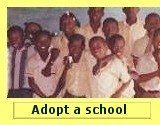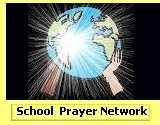home >> caribbean mitigation
 UNITED
CARIBBEAN TRUST-Volunteers
UNITED
CARIBBEAN TRUST-Volunteers
What’s in it for volunteers? Reasons to
participate:
No one is better equipped to prepare
your constituencies for disaster – with less loss of property and
life – than you.
• Participants can help individuals and CBO/FBO groups understand
what role they might play in creating their own disaster-resistant environment,
as well as how they can work with others to build a disasterresistant
community. Participants are empowered to take charge of their own safety
and reduce their disaster risk.
• Participants can educate groups and individuals on the importance
of disaster mitigation and the benefits they and the community will see
from working to reduce disaster risk.
• Participants can learn new skills that would be valuable in mitigation
projects (e.g., amateur radio and emergency communication, safety retrofit
skills, power tool use, etc.)
Identifying and Recruiting Volunteers from other CBOs and FBOs
1. Developing a CBO/FBO list
2. Expanding the CBO/FBO list
3. Understanding other CBOs/FBOs; Brainstorm the following:
• What do we know about this group?
• Does it have goals for community improvement or member safety?
• Does it represent a particularly vulnerable population?
• Is there a reasonable link between the group’s mission and
mitigation?
• What is the organization’s culture?
• How does it make decisions?
• What is the organization’s role in the community –
both outwardly perceived and self-perceived?
• Would this group be interested in working with other organizations
on community-based mitigation?
• Who do we know that has personal or professional relationships
with the leaders of this organization? Would they be willing to help us
recruit? Community-based Pre-Disaster Mitigation for CBOs/FBOs
The Importance of Understanding Organizational Culture and Mission
Each CBO and FBO has a different culture, organizational and leadership
style and structure, mission, and vision of its purpose. As you begin
to recruit and work with different CBOs and FBOs, it is essential to form
a basic understanding of these characteristics.
This type of understanding:
• Is the starting place for finding common ground
• Highlights issues that will require sensitive treatment as you
work with this organization and its members
• Helps you envision how and why this organization could or should
become interested in participating in community-based mitigation
• Forms the basis for how initial contact should be handled and
by whom
• Identifies concerns and questions that are likely to arise upon
initial contact, enabling you to prepare to address them in advance of
the contact
• Facilitates a strong beginning for building rapport
• Bodes well for the establishment of successful long-term relationships
4. Developing an action plan for getting other CBOs/FBOs involved
• How will CBOs/FBOs be contacted?
• What kind of information will need to be shared during the initial
contact?
• Who will put the information together?
• Who will contact specific groups?
• What will the groups be asked to do initially and in the future?
• What’s in it for the CBOs/FBOs (why should they participate,
and what are the benefits to participation)?
• What is the schedule?
• Who in our group can spearhead the CBO/FBO contact effort? Community-based
Pre-Disaster Mitigation for CBOs/FBOs
Tips for Generating Excitement about Community-Based Mitigation
As you contact CBOs and FBOs to solicit their participation in community-based
mitigation programs, be prepared to generate some excitement to gain their
interest and commitment. What you learn about each organization’s
culture, organizational and leadership style and structure, mission, and
vision of its purpose will help you define the best approach. However,
here are some tips to get you started:
Appeal to human interest. Share some of the exciting human-interest stories
of successful community-based
mitigation programs. Many of the experiences are heart-warming and show
how fulfilling this type of work can be.
Personalize the issue. Ask about the members of their organization, and
engage in a discussion of risk and
vulnerability. Discuss how mitigation programs could benefit the organization’s
constituents. For example, an
FBO day-care facility may represent a vulnerable population.
Create a link to the organization’s mission and programs. With most
CBOs and FBOs, some aspect of their
mission or existing programs forms a natural link to mitigation programs.
For example, if helping the underprivileged
is an organizational goal, describe the mitigation needs of the underprivileged
population and how volunteers can assist. Community-based Pre-Disaster
Mitigation for CBOs/FBOs
Sustainability:
Keeping Volunteers Engaged
Recognizing Volunteers and Partners
Sourced from FEMA
|

 UNITED
CARIBBEAN TRUST-Volunteers
UNITED
CARIBBEAN TRUST-Volunteers






